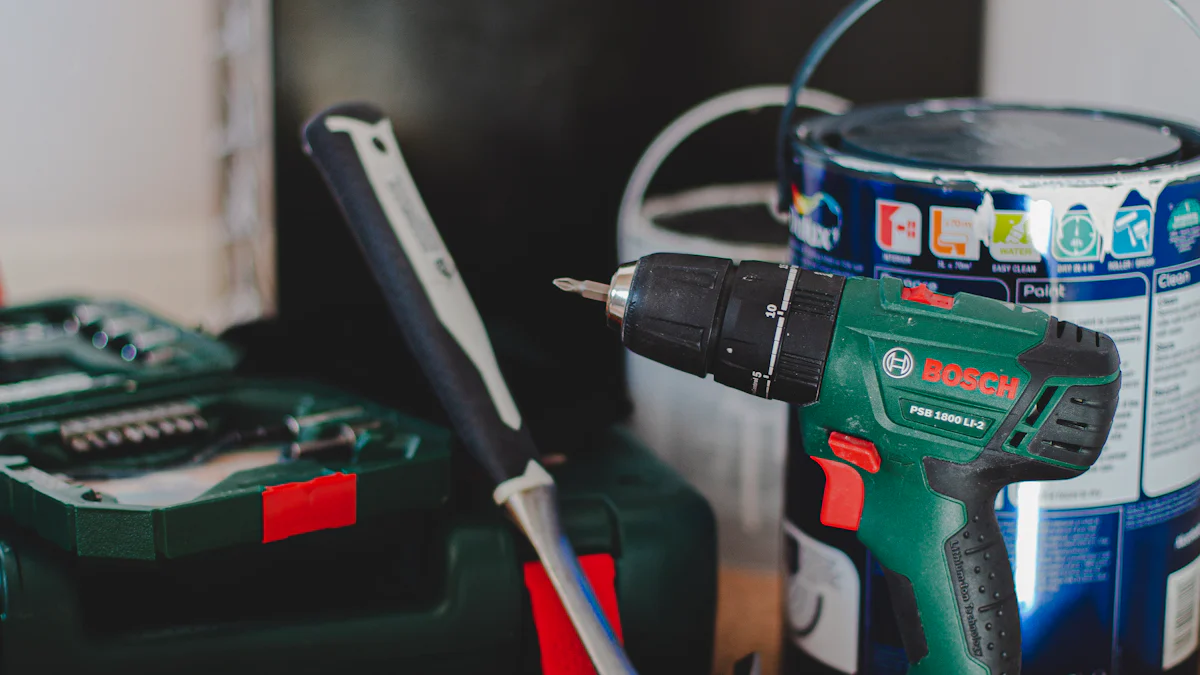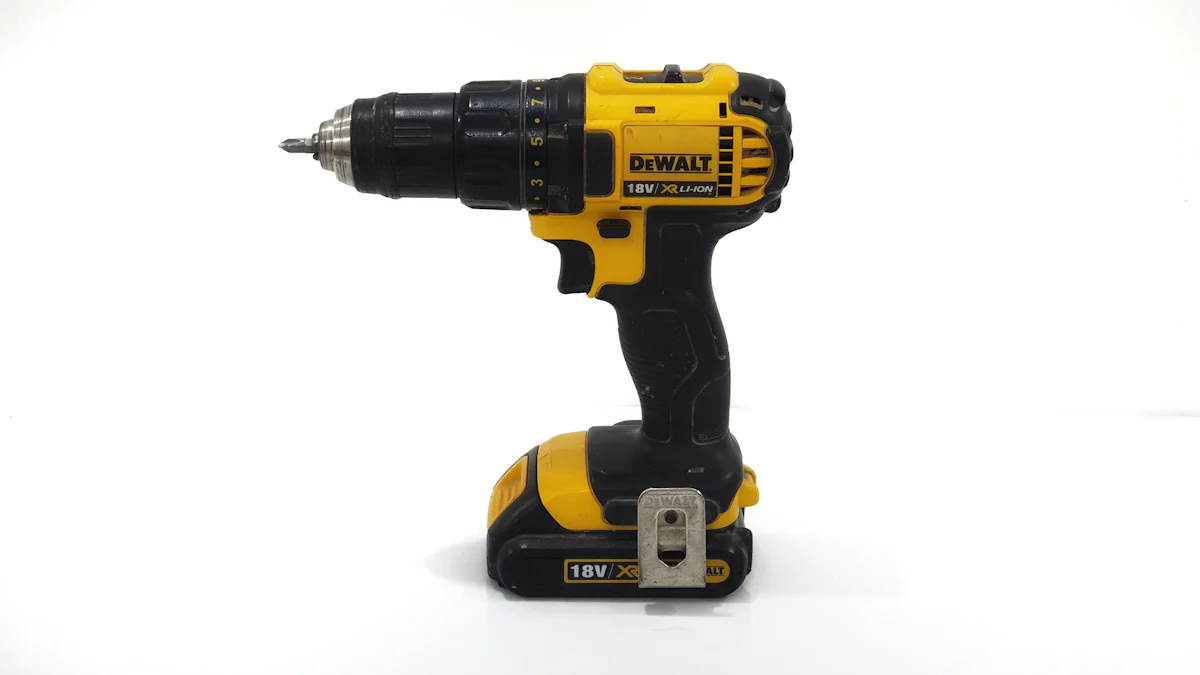
Power tools play a crucial role in various tasks, from home improvement projects to professional construction work. The debate between cordless and corded power tools remains a hot topic among enthusiasts and professionals alike. Each type offers unique advantages and disadvantages, making the choice between them significant. This blog aims to provide valuable insights to help readers make an informed decision when visiting a tools and hardware shop.
Advantages of Cordless Power Tools

Portability
Cordless power tools offer unparalleled portability. Users can move freely without being tethered to a power outlet. This ease of movement enhances productivity and efficiency on job sites. Professionals working in remote locations find cordless power tools indispensable. These tools eliminate the need for cumbersome extension cords, allowing work in areas without easy access to electrical connections.
Convenience
Cordless power tools provide unmatched convenience. Users do not need to search for power outlets, which speeds up setup time. Quick setup and use make these tools ideal for smaller jobs. Workers can start tasks immediately upon arrival at a site. This feature proves especially beneficial in environments where time is critical.
Technological Advancements
Recent technological advancements have significantly improved cordless power tools. Enhanced battery life allows for longer periods of uninterrupted work. Modern batteries offer impressive power output, rivaling or surpassing corded counterparts. For example, Makita’s XGT series provides 40V MAX and 80V MAX options. These advancements ensure that professionals can tackle even the most demanding applications with confidence.
Cordless power tools also incorporate features that enhance performance. Variable speed controls allow users to match the tool’s speed to specific tasks. This customization reduces user fatigue and improves overall efficiency. The absence of cords also minimizes the risk of tripping, promoting a safer work environment.
Disadvantages of Cordless Power Tools
Battery Limitations
Cordless power tools face significant battery limitations. Limited runtime restricts the duration of continuous work. Professionals often find this challenging during extended tasks. The need for recharging interrupts workflow, causing delays. Frequent recharging can become a hassle, especially on busy job sites.
Cost
The cost of cordless power tools presents another disadvantage. Higher initial investment makes them less appealing to budget-conscious buyers. Replacement batteries add to the overall expense. Over time, these costs accumulate, impacting long-term affordability. Tools and hardware shop customers often weigh these factors before purchasing.
Weight
Cordless power tools tend to be heavier due to batteries. This added weight can lead to user fatigue. Extended use becomes strenuous, affecting productivity. Heavier tools are harder to maneuver, especially in tight spaces. Professionals must consider this when choosing between cordless and corded options.
Advantages of Corded Power Tools

Consistent Power Supply
Corded power tools provide a reliable and consistent power supply. This ensures uninterrupted operation, which is crucial for professionals working on extended tasks. The continuous power flow allows these tools to handle heavy-duty applications without any performance dips. Tools and hardware shop customers often prefer corded tools for demanding jobs that require sustained power.
Uninterrupted Operation
Corded power tools eliminate the need for battery recharges. This feature ensures that work can proceed without interruptions. Professionals appreciate the ability to complete tasks efficiently without worrying about power depletion. Tools and hardware shop visitors often seek out corded options for projects requiring long hours of operation.
Suitable for Heavy-Duty Tasks
Corded power tools excel in heavy-duty tasks. The constant power supply makes them ideal for cutting, drilling, and grinding through tough materials. These tools maintain their performance under high loads, making them a preferred choice for construction and industrial applications. Tools and hardware shop patrons frequently choose corded tools for their robustness and reliability.
Cost-Effectiveness
Corded power tools offer significant cost advantages. The lower initial cost makes them accessible to a broader range of users. Tools and hardware shop customers often find corded tools more budget-friendly compared to cordless alternatives.
Lower Initial Cost
Corded power tools generally have a lower purchase price. This affordability appeals to both DIY enthusiasts and professionals. Tools and hardware shop visitors often consider the cost savings when selecting corded tools for their projects.
No Need for Battery Replacements
Corded power tools do not require battery replacements. This eliminates ongoing expenses associated with maintaining battery-powered tools. Tools and hardware shop customers appreciate the long-term savings provided by corded options. The absence of battery-related costs enhances the overall value of these tools.
Lighter Weight
Corded power tools typically weigh less than their cordless counterparts. The absence of heavy batteries contributes to this reduced weight. Tools and hardware shop visitors often prefer lighter tools for ease of use and maneuverability.
Easier to Handle
The lighter weight of corded power tools makes them easier to handle. Users experience less fatigue during prolonged use. Tools and hardware shop customers value the comfort and control offered by these tools. The ergonomic design further enhances user experience, making corded tools a practical choice for various tasks.
Reduced User Fatigue
Corded power tools help reduce user fatigue. The lighter design minimizes strain on the arms and shoulders. Tools and hardware shop patrons often select corded tools for projects requiring extended periods of operation. The reduced fatigue allows for more efficient and comfortable work sessions.
Disadvantages of Corded Power Tools
Limited Mobility
Corded power tools restrict movement. The cord length limits the working area. Users must stay within a few feet of a power outlet. This constraint hampers productivity on large job sites. Cordless tools, in contrast, offer freedom of movement.
Restricted by Cord Length
The cord length determines the range of motion. Users must frequently adjust positions to stay connected. This constant repositioning disrupts workflow. Professionals find this limitation frustrating during extensive tasks.
Need for Power Outlets
Power outlets are essential for corded tools. Job sites without sufficient outlets pose challenges. Workers must use extension cords, adding complexity. This requirement makes corded tools less suitable for remote locations.
Safety Concerns
Corded power tools present safety risks. Tripping over cords is a common hazard. Damaged cords can cause electrical shocks. These risks necessitate extra caution during use.
Risk of Tripping Over Cords
Cords create tripping hazards on job sites. Workers must navigate around them carefully. One user shared an experience of frequent trips and falls due to cords. This risk increases in cluttered or busy environments.
Potential for Cord Damage
Cords are susceptible to damage. Cuts and abrasions compromise their integrity. Damaged cords pose electrical hazards. Regular inspection and maintenance are necessary to ensure safety.
Setup and Storage
Corded power tools require time-consuming setup. Proper storage of cords presents additional challenges. Users must allocate space for lengthy cords. These factors contribute to the overall inconvenience.
Time-Consuming Setup
Setting up corded tools takes time. Users must locate power outlets and arrange cords. This process delays the start of work. Quick tasks become cumbersome due to the setup requirements.
Storage Challenges with Cords
Storing cords requires dedicated space. Cords often become tangled and difficult to manage. *One user noted that organizing lengthy cords is cumbersome*. Proper storage solutions are necessary to maintain order.
Key Factors to Consider
Nature of Tasks
Type of Projects
The type of projects significantly influences the choice between corded and cordless power tools. Cordless tools excel in tasks requiring mobility and flexibility. Professionals often use cordless drills and impact drivers for quick jobs. Corded tools, however, provide the sustained power needed for heavy-duty applications. Tools and hardware shop customers often choose corded saws and grinders for cutting and grinding tasks.
Frequency of Use
The frequency of tool use also plays a crucial role. Frequent users benefit from the consistent power of corded tools. These tools eliminate downtime caused by battery recharges. Occasional users may prefer the convenience of cordless tools. Quick setup and ease of use make cordless options appealing for infrequent tasks. Tools and hardware shop visitors often weigh these factors based on their usage patterns.
Work Environment
Indoor vs. Outdoor
The work environment impacts the decision-making process. Indoor projects often have easy access to power outlets. Corded tools perform well in such settings. Outdoor tasks, especially in remote locations, favor cordless tools. The absence of cords allows for unrestricted movement. Tools and hardware shop patrons working outdoors often opt for cordless solutions.
Availability of Power Sources
The availability of power sources is another critical consideration. Job sites with limited power outlets pose challenges for corded tools. Extension cords add complexity and potential hazards. Cordless tools offer a practical solution in these scenarios. Tools and hardware shop customers working in areas with scarce power sources often prefer cordless tools.
Budget
Initial Investment
Budget constraints influence the choice between corded and cordless tools. Corded tools generally have a lower initial cost. This affordability appeals to budget-conscious buyers. Tools and hardware shop visitors often find corded tools more accessible. Cordless tools, however, require a higher initial investment. The cost of batteries and chargers adds to the expense.
Long-Term Costs
Long-term costs also play a significant role. Corded tools do not incur ongoing expenses for battery replacements. This factor enhances their long-term value. Tools and hardware shop customers appreciate the cost savings over time. Cordless tools, however, require periodic battery replacements. These costs accumulate, impacting overall affordability.
Future Trends in Power Tools
Innovations in Battery Technology
Longer battery life
The future of power tools will see significant advancements in battery technology. Tools and hardware shop customers can expect longer battery life, allowing for extended periods of uninterrupted work. Brands like Milwaukee Tools and DeWalt have pioneered innovations in lithium-ion batteries. New battery chemistries promise to make tools more efficient and lighter. These improvements will enhance the overall user experience, making cordless tools even more appealing.
Faster charging times
Faster charging times represent another exciting development in battery technology. Tools and hardware shop visitors will benefit from reduced downtime, as modern batteries will charge more quickly. The evolution of lithium-ion technology has already led to impressive reductions in charging times. Future advancements will continue this trend, ensuring that users spend less time waiting and more time working.
Smart Tools
Integration with apps
Smart tools are becoming increasingly popular in the power tool industry. Tools and hardware shop customers will find tools with enhanced connectivity and diagnostics. Brands like Milwaukee and DeWalt are already incorporating smart technology into their products. Future cordless power tools may feature integration with smartphone apps, allowing users to customize settings and track usage. This innovation will provide greater control and efficiency on job sites.
Enhanced user control
Enhanced user control is a key feature of smart tools. Tools and hardware shop patrons will appreciate the ability to fine-tune their tools for specific tasks. Smart tools will offer real-time digital communication between the tool and battery. This technology actively monitors factors such as heat, overload, and over-discharge. Users can expect optimized performance and increased safety. The integration of smart technology will revolutionize the way professionals and DIY enthusiasts use power tools.
The blog highlighted the key points of both cordless and corded power tools. Choosing the right tool depends on individual needs and specific tasks. Users should weigh the pros and cons carefully before making a decision.
- Cordless Tools:
- Offer unparalleled portability and convenience.
- Feature technological advancements like improved battery life and enhanced performance.
- Face limitations such as higher cost and battery constraints.
- Corded Tools:
- Provide consistent power supply and cost-effectiveness.
- Excel in heavy-duty tasks with uninterrupted operation.
- Present challenges like limited mobility and safety concerns.
Future trends in power tools include innovations in battery technology and the rise of smart tools. These advancements will continue to shape the industry, offering users more efficient and versatile options.
See Also
Discovering the Assortment of Socks for Males and Females
